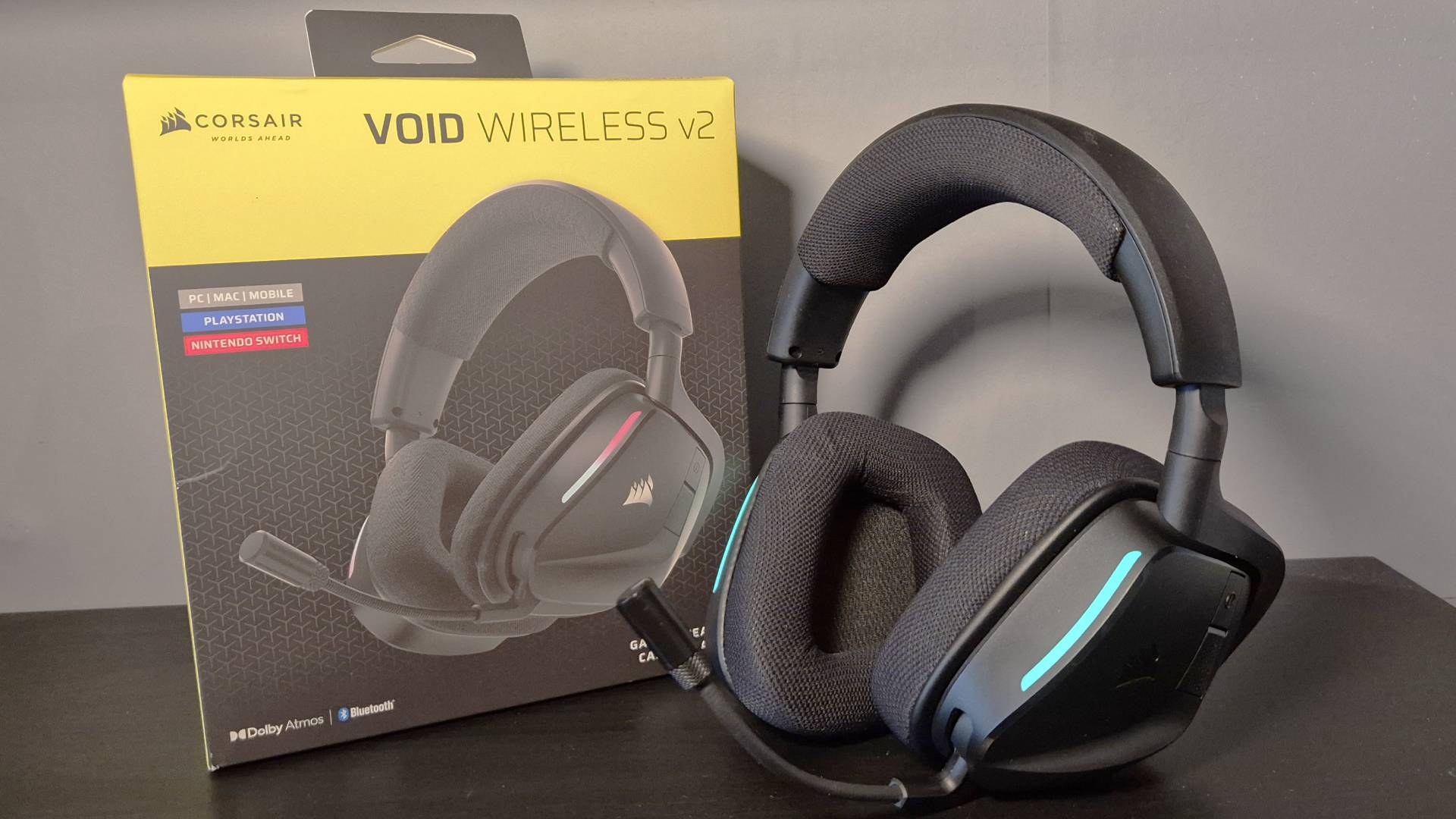
Just like the biggest names in gaming audio tech, Corsair isn’t a stranger to releasing more affordable options alongside its premium gaming headsets. The Corsair Void Wireless V2 is the latest headset in the brand’s arsenal that keeps costs low and the quality high, just like the Corsair Void Elite before it.
This time around, Corsair hasn’t strayed too far away from the design of its predecessor, and the $199.99 / £99.99 headset features the same all-black colorway and oblong cups as before. Not to mention the brand has still managed to pile on the custom 50mm Neodymium drivers, to keep that impressive audio quality going, along with some well-needed upgrades. Instead of the flashy RGB-lit logos, the Void Wireless V2 is dripped out in two subtle strips of lighting on either front-facing edge, and the 16-hour playback has been put to shame with its now up to 70-hour battery life.
If you already have the Void Elite, the Void Wireless V2 may be a hard sell, and it’s very similar in looks and in sound. Yet, Corsair has managed to pull together enough small upgrades and changes to make it a notable step up, and impressed me almost as much as the Corsair Virtuoso Max, one of the best gaming headsets from the brand I’ve tested so far, all without breaking the bank. I’d maybe sit this one out if you’re an everyday glasses wearer, though.
Key specs
Design
The Corsar Void V2 gaming headset’s design is pretty familiar if you’ve already spent time with the Corsair Void Elite. The Void V2 comes with the same diamond-shaped cups, coated in a matt-black plastic finish. Both the densely padded foam cushions and the padded headband also come with a fabric mesh coating, which, while it is a bit of a cat-hair magnet, managed to keep its cool even after hours upon hours of sweat-induced sessions playing Marvel Rivals on the PS5 and PC.
The onboard buttons are minimal, with all being regulated to the left cup. There, you can find the power button, which can also be pressed again to switch between Bluetooth and 2.4GHz mode. Below that is a custom button, which can be remapped via iCue. Along the bottom edge of the same cup, you can find the USB-C port, along with a plastic volume switch that can be flicked back and forth.
The yokes also keep their design from their predecessor, attaching just to the back of each cup. This gives the headset a little more give, especially at the front-facing side, which is great in theory. Yet in practice, it meant cups were always putting extra pressure on either side of my glasses. If you aren’t a glasses wearer (lucky you), then this won't factor into your comfort levels. But for me, it meant that my frames were pushed against my headset, making them sit at a weird angle.
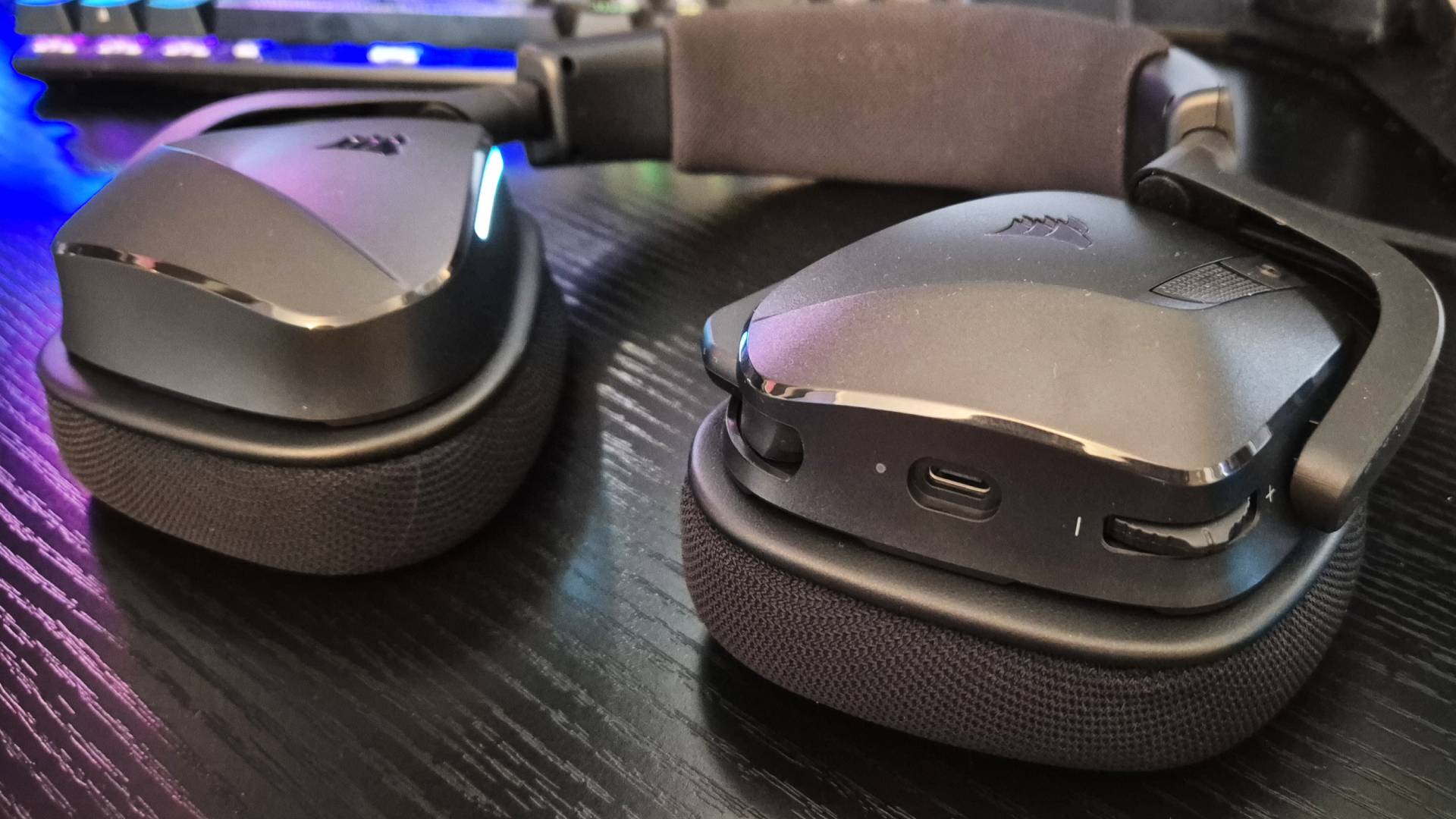
Not only did my glasses get in the way, but the new placement of the RGBs also made me start looking for my contact lenses. For the Void Wireless V2, Corsair opted to swap the RGB-lip of logos of the Void Elite with two RGB strips. These strips sit at the front-facing edges of the headset, which, in low-lighting scenarios, bounced off the edges of my lenses. It’s worth noting that I don’t have that fancy green coating to my glasses, so that may help put a stop to seeing a rainbow lightshow in your peripheral vision when gaming in the dark. Fortunately, you can also pop up iCue and turn off the RGBs, but it does mean having your PC ready, as there’s no app equivalent for now.
Despite this extra pressure on my glasses, they weren’t entirely uncomfortable by any means. Their 303g chassis meant they felt light as a cloud on top of my head, which was a relief after recently spending time with the Corsair Virtuoso Max Wireless and their 417g of added weight. Some light-weight budget headsets have the tendency to feel cheap, but Corsair brought along the high-quality I’ve come to expect from their premium headsets to this budget-friendly pair, and overall, the plastic form factor felt incredibly robust and held up even after being in my clumsy grasp for multiple weeks.

Unlike the Razer Barracuda X Chroma, this budget headset doesn’t have a detachable microphone. Instead, the omnidirectional mic sits flush with the left cup until flipped down for when you want to chat to your bff’s on Discord, or during phone calls and video chatting. In the past, I’ve noticed headsets with a similar $119.99 / £99.99 price range can have cheap mics that flop around every time you move an inch, but thankfully, that’s not the case here. The Void Wireless V2 mic has a really rigid boom arm, and the mic itself features a textured grip to make it easier to grasp at a moment's notice. While unfortunately there’s no mic mute button, that grip at least made it easy to quickly grab and push the mic away so my friends didn’t have to hear my nasty eating noises when I wanted to have a quick bite during rounds of Marvel Rivals.
Features
The Void Wireless V2 isn’t bursting at the seams with features, but it does have pretty much all you’d really want if you’re spending a little above $100, with some exceptions. Just like the Corsair Void RGB Elite, this is a wireless headset, and that means it has Bluetooth and 2.4GHz support via its accompanying dongle, and that’s it. That still means you can connect it up to your PS5, Nintendo Switch (and upcoming Nintendo Switch 2), PC, and Steam Deck, so it’s not a huge loss. Yet, it can be a bit of a bummer to hear if you prefer your budget cups to have a 3.5mm connection and hate messing around with Bluetooth with your Ninty hardware.
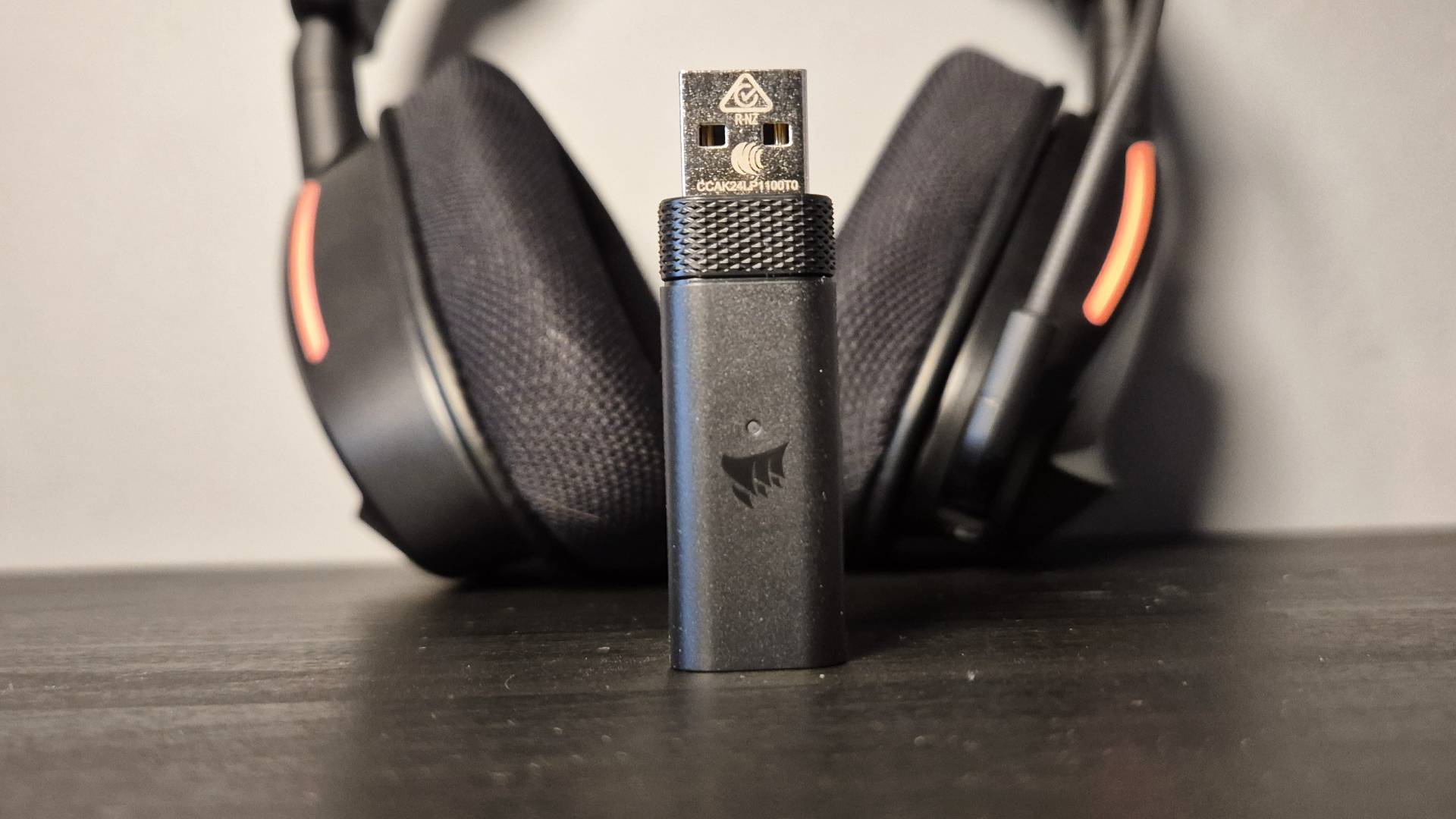
I was quick to forget it lacked any wired connectivity options when it came to its audio features. The headset comes with custom 50mm Neodymium drivers, which I’d expect to find on Corsair’s high-end headsets, and not a budget pair like the Void Wireless V2. Not to mention, it also features Dolby Atmos spatial audio, which can be turned on through the audio settings of the PS5 or via the Dolby Atmos app on PC. So long as you're playing a compatible game, like Sea of Thieves, this unlocks the full potential of the powerful audio drivers, and pops the sound all around you in a 3D space, which is an impressive level of immersion to be found on such an affordable pair of cups.
Of course, as a Corsair accessory, with the Void Wireless V2 in tow, you can use iCue to tweak the audio settings and the updated RGB lighting. As briefly mentioned above, the Void Wireless V2 opts for two strips of lighting at the front-facing edge of either cup, instead of flashy lit-up logos of its predecessor. Through iCue’s built-in lighting effects, these can be changed to static colors, or you can pick through pre-made lighting types from a wave of rainbow colors, to a raindrop effect, which cycles through different blue hues. The customizability for such a small surface area of RGB lighting is appreciated, however, iCue is still just as frustrating to use as ever before, so I pretty much left them as is.
Having the RGB on by default will drain the battery faster than normal. But with up to 70 hours, you shouldn’t really notice a huge difference. The 70 hours of juice seems pretty accurate, as other than the full charge I gave the Void Wireless V2 right out the box, I only had to charge it once in over two weeks, and that was after multiple hours of Marvel Rivals, Dead by Daylight, my current-gaming obsession known as ‘Master Detective Archives Rain Code’ and listening to hours upon hours of music while working.
Performance
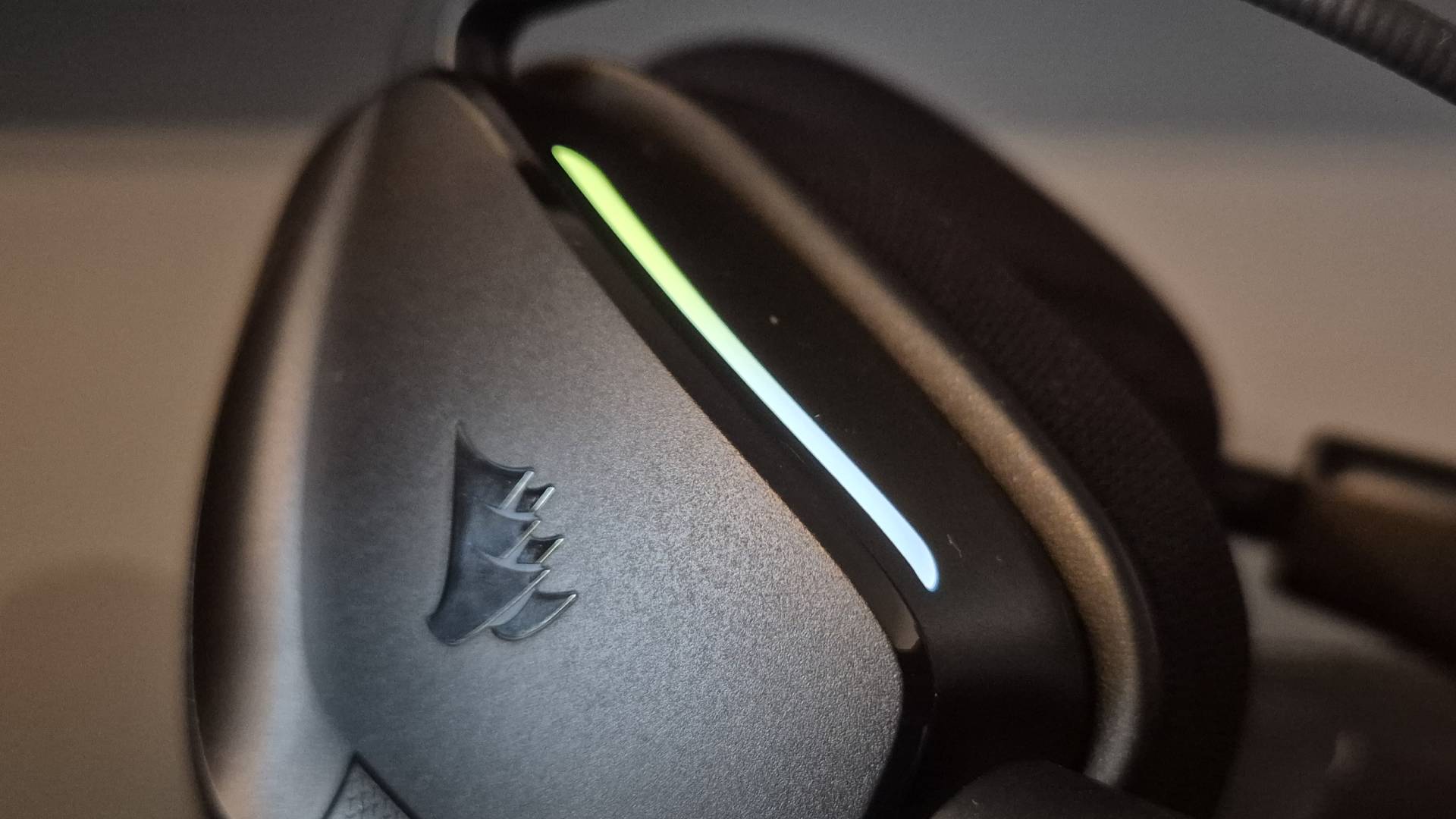
With custom 50mm Neodymium drivers in its midst, you can bet the Void Wireless V2 sounds the part. Not too long ago, I was taken aback by the Corair Virtuoso Max Wireless headset and the quality of sound that its 50mm Graphene audio drivers could muster, so it shouldn’t come as no surprise that the custom 50mm Neodymium impressed me, even in this more budget-friendly form factor.
With the brand-new season of Marvel Rivals around the corner, I used the Corsair pair of cups as I got in some valuable practice with the hero shooter, on both PS5 and PC. Racking up my kills as Starlord, and charging forth stampede after stampede of squirrels as Squirrel Girl were easy to do on the headset, which gave a nice balance to everything on screen. Whether it was the cheeky dialogue at the start of every match, Galacta’s high-pitched announcements, or the energetic and empowering score, the low, mids, and high ranges sounded clear as day. On PC, I could get the headset a little louder, and use one of the many audio pre-sets which helped get that booming bass I prefer, but it still sounded just as detailed and balanced on the PS5, even without any customization at my fingertips.
It was playing Dead by Daylight where the sound quality truly blew me away. During my two weeks of testing, the Blood Moon event was running, which changed the logo at start-up. The instant the updated DBD logo changed to blood red, this creepy sound effect was triggered, which made me jump off the edge of the sofa. The high-quality headset made the squelching audio sound so clear I had to take a moment to realise it was coming from the game, and that someone wasn’t sitting right next to me trying to give me a scare. Of course, this headset features Dolby Atmos support, which also helped make Dead by Daylight, and games like Sea of Thieves sound all the more immersive.
When running about my 2-manned sloop, the spatial audio made the creeks and sounds of the waves splashing against my ship sound like I was truly there. At this point, I can’t quite imagine taking to the seven seas without Dolby Atmos, and the Void Wireless V2 really helped bring Rare’s game to life. As did the quality of the omnidirectional microphone, which flips down from the left cup of the headset. Sure, for a mic on a $119.99 / £99.99 headset, it wasn’t going to give streaming microphones like the Shure MV7i a run for its money, but I regularly got compliments from friends on how clear, and easily I came through, even against the Razer BlackShark V2 Pro mic my partner was using during the same Marvel Rival gaming sessions on the PS5.
As an omnidirectional mic, it will pick up sounds other than your speaking voice, which did become a bit of an issue. If your PC, PS5, or Nintendo Switch is tucked away in a separate room from loud noises, then it won’t be quite noticeable. However, I had to turn down the gain of the mic through the Discord app at its lowest possible setting to ensure it picked up my voice, and my voice only, especially as my partner’s PC is in the same room as my beloved PS5.
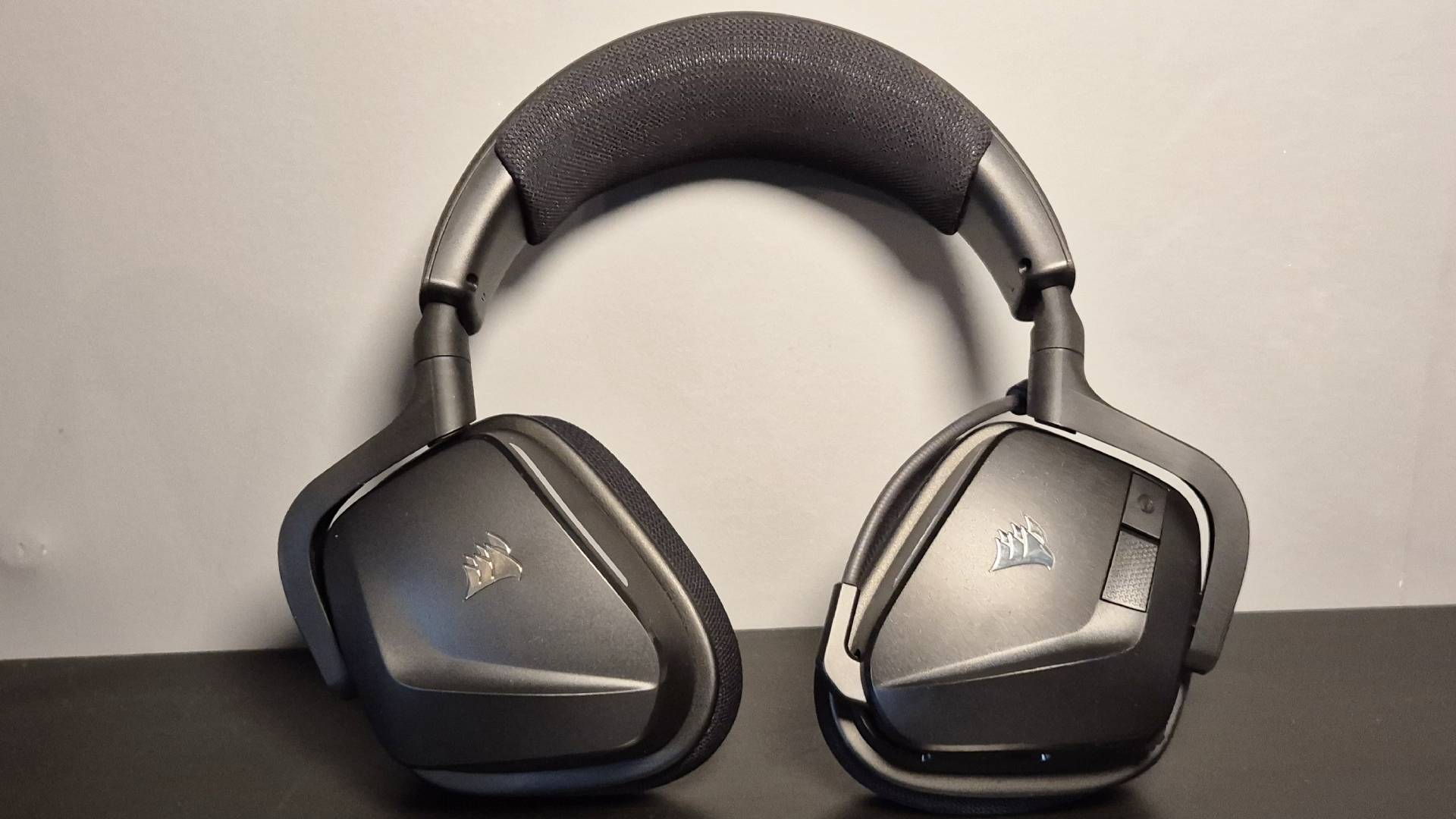
The only other issue that really affected the headset’s performance in any way was the cup's tendency to lean forward. There’s no noise canceling to be found with the Void Wireless V2, but each time the headset decided it wanted to lean slightly forward, it meant my ears weren’t completely covered, so I wasn’t able to hear the full power that the 50mm drivers can muster. A tighter clamping force may have sorted this, but honestly, I'm not a fan of its oblong-shaped ear cups. I know this headset is a step up from the Void Elite, and so it makes sense to have it carry on the same shaped cups from its predecessor, but had they included the large glasses-friendly circular cups of the Virtuoso Max, I’m willing to bet it’d have rectified the issue.
With the mic stuck to the headset, this isn’t one you can take with you out and about, though it might be tempting with its lightweight design. However, it still lent itself to listening to music, no matter if it was pop, or even nu-metal. I listened to a ton of Charlie XCX to see how the bass could handle the drops in tracks like ‘Von Dutch’, and there was no distortion, no matter how loud it got. The Void Wireless V2 also came in handy when catching up with season two of the anime, Solo Leveling, and brought the action scenes, and catchy opening and ending tracks, to life thanks to its trusty 50mm drivers.
Should you buy the Corsair Void Wireless V2 gaming headset?
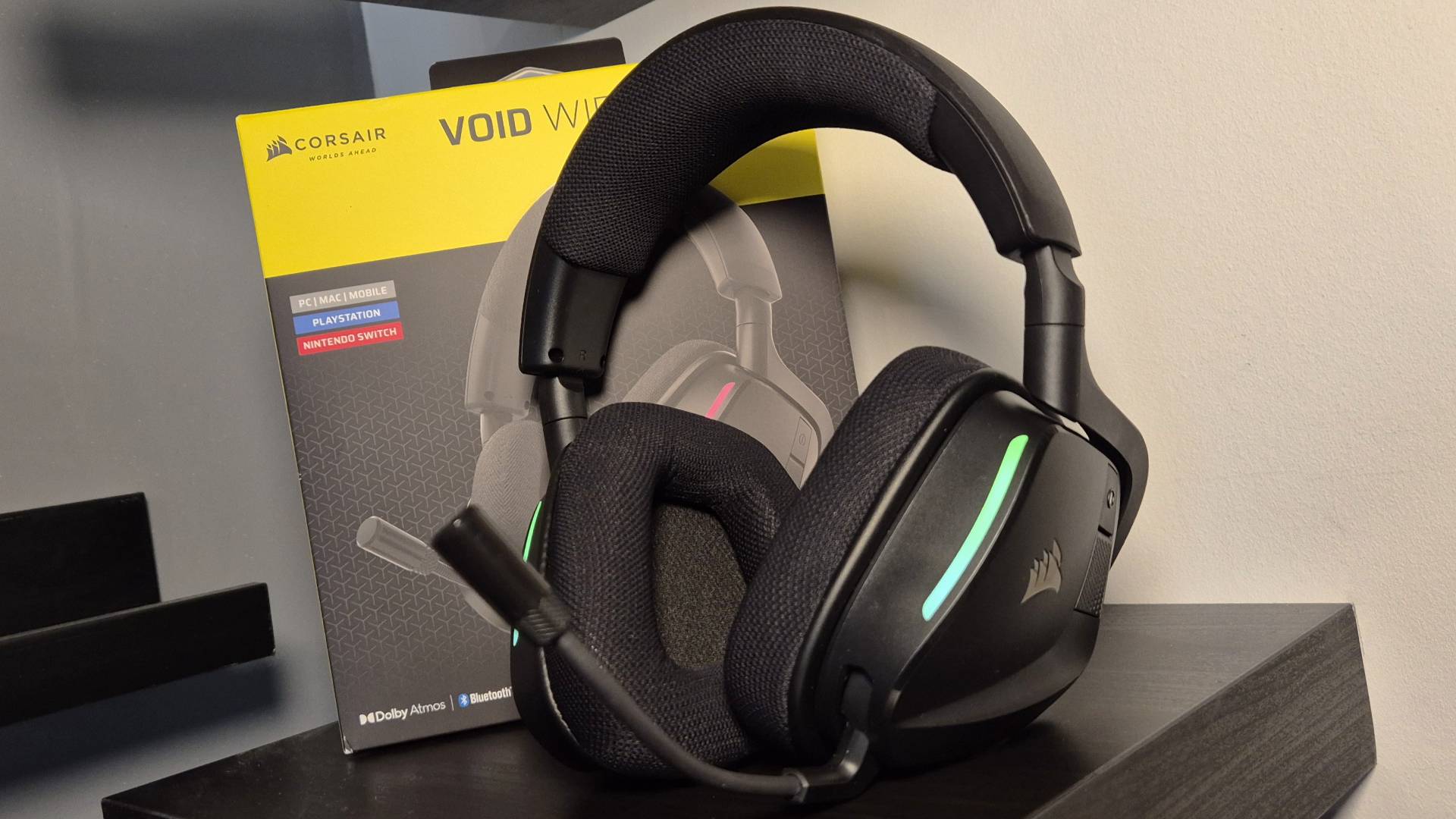
If you don’t want to splash out hundreds of dollars on your gaming headset, Corsair’s Void Wireless V2 is up there with some of the best-sounding headsets out there right now. The brand has managed to produce a low-cost headset at $119.99 / £99.99, which still manages to pile on some powerful 50mm Neodymium audio drivers, spatial audio, and a great-sounding mic that I’d expect from their flagship headsets instead.
No matter if I was playing the PC, PS5, Steam Deck, or the original Nintendo Switch, the Void Wireless V2 made everything sound its best, and it was incredibly easy to set up to boot. I would recommend this more to PC players, however, due to its dependence on iCue for audio and lighting customization. Plus, if you’re already in the Corsair ecosystem, adding this headset into the mix will mean you can sync up all your lighting to your Corsair-branded gaming keyboard, and gaming mouse, while only having to rely on one software (outside of the Dolby Atmos app).
That being said, it is missing any wired connectivity options, making other low-cost headsets like the Razer Barracuda X a valid alternative. Sure, the Barracuda X is missing the booming quality of 50mm audio drivers, but its 40mm Razer TriForce drivers can still pack a punch. Better yet, you can regularly find it far cheaper than $100 during big sales events, due to its age. If you want a little more firepower, that RGB lighting, prefer oblong-shaped cups, and want the sound quality that rivals even the best Corsair headsets on the market, the Corsair Void Wireless V2 ticks all those boxes - just maybe give it a skip if you wear glasses every single day.
How I tested the Corsair Void Wireless V2 gaming headset
In the over two weeks that I had the Corsair Void V2 gaming headset, I racked up the hours in Marvel Rivals (especially as season two finally debuted), Dead by Daylight, Sea of Thieves, and Master Detective Archives: Rain Code on the PS5. As I lived and breathed the budget headset, I also played Marvel Rivals on the PC so I could accurately compare the sound across different platforms, and tested games like Counter-Strike 2. On the original Nintendo Switch, I played Super Mario Sunshine and Super Mario Galaxy (via Super Mario 3D All-Stars) and played Spiritfarer with the headset on the Steam Deck.
Outside of gaming, I also watched a ton of TV streaming apps, using the headset to catch up on the second season of Solo Leveling on Crunchyroll, and listened to a plethora of different music genres via Spotify - from Djo’s new album ‘The Crux’ to Charlie XCX. For more information on how we test gaming headsets, check out the full GamesRadar+ Hardware Policy.
If the Corsair Void Wireless V2 gaming headset isn’t for you, check out our guides to the best PS5 headsets, best Nintendo Switch headsets, and the best Xbox Series X headsets to find the perfect pair of cups for your favorite console.







